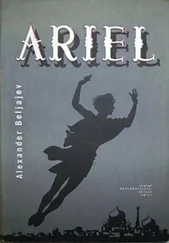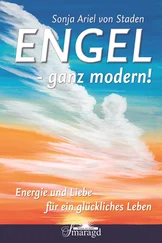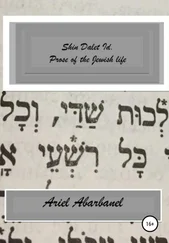Ariel Toaff - Blood Passover
Здесь есть возможность читать онлайн «Ariel Toaff - Blood Passover» весь текст электронной книги совершенно бесплатно (целиком полную версию без сокращений). В некоторых случаях можно слушать аудио, скачать через торрент в формате fb2 и присутствует краткое содержание. Жанр: Религиоведение, на английском языке. Описание произведения, (предисловие) а так же отзывы посетителей доступны на портале библиотеки ЛибКат.
- Название:Blood Passover
- Автор:
- Жанр:
- Год:неизвестен
- ISBN:нет данных
- Рейтинг книги:3 / 5. Голосов: 1
-
Избранное:Добавить в избранное
- Отзывы:
-
Ваша оценка:
- 60
- 1
- 2
- 3
- 4
- 5
Blood Passover: краткое содержание, описание и аннотация
Предлагаем к чтению аннотацию, описание, краткое содержание или предисловие (зависит от того, что написал сам автор книги «Blood Passover»). Если вы не нашли необходимую информацию о книге — напишите в комментариях, мы постараемся отыскать её.
Blood Passover — читать онлайн бесплатно полную книгу (весь текст) целиком
Ниже представлен текст книги, разбитый по страницам. Система сохранения места последней прочитанной страницы, позволяет с удобством читать онлайн бесплатно книгу «Blood Passover», без необходимости каждый раз заново искать на чём Вы остановились. Поставьте закладку, и сможете в любой момент перейти на страницу, на которой закончили чтение.
Интервал:
Закладка:
125
Cfr. Jacoby, New Evidence on Jewish Bankers in Venice , cit., pp. 156-157; Carpi, L'individuo e la collettività , cit., p. 58. On 11 February 1495, a legal dispute was recorded between the municipality of Piove di Sacco and "Salamoncinus, hebreus phoenerans in hoc loc Plebiscacci ". The document summarizes the clauses of the items for the loan, granted in a timely fashion by the community to Salamoncino, including that of being able to accept any type of pledge as security for loans, with the exception of objects of worship of the Christian religion ("[...] per formam capitulorum concessum est ipsi Salamoncino libere praestari super quocumque pignore indifferenter, exceptis crucibus et calcibus, sive rebus ecclesiasticus sacratis, tamquam phoenerator publicus"). Cfr. P. Plinton, Codice Diplomatico Saccense , Rome, 1894, no. 552.
126
Marin Sanudo, I diarii, by R. Fulin et al., Venice, 1879-1903, II, column 42 (22 May 1499), III, column 803 (1500).
127
"Et inter ipsos Iudeos fuit dictum [...] quod in civitate Venetarium tunc erat quidam magnus mercator Iudeus de insula Candie, qui portavit magnum quantitatem sanguinis pueri Christiani ad vendendum, et etiam portaverat magnam quantitatem zuccari. Et quod dici audivit a quodam Ioseph Forles, qui venerat post Serenissimum Imperatorem Venetias, quod volevat emere de sanquine a dicto mercatore Hebreo. Et similiter dici audivit a quibusdam aliis, de quidibus non recordatur, quod volebant emere de dicto sanguine, licet ipse non emerit. Dicit tamen quod, crede suo, omnes alii Iudei, qui ibi aderant, emerunt de dicto sanguine" (cfr. A. Esposito and D. Quaglioni, Processi contro gli ebrei di Trento,1475-1478: I: I processi del 1475 , Padua, 1990, pp. 328-329). The fact that the blood put up for sale, together with the sugar, by Mavrogonato was of " pueri Cristiani " [Christian boys] appears to be an allusion by Tobias da Magdeburg or German Jews having moved to Venice in the retinue of Friedrich III, with whom he had spoken. There is nothing to cause us to believe, however, that the information supplied by Tobias should, on the whole, be considered "exotic details" (cfr. R. Po-Chia Hsia, Trent 1475 . A Ritual Murder Trial , New Haven, Conn., 1992, p. 46), just as the description of the Jew from Candia as a "great merchant in the imperial entourage, who sold sugar and blood" (ibidem). On the sugar manufacturies transplanted from Venice to Crete starting at the beginning of the XIV century and on the curative uses of sugar, particularly widespread in the Jewish medieval medical treatises, see, in particular, S.W. Mintz, Sweetness and Power. The Place of Sugar in Modern History , Baltimore (Md.), 1985.
128
"Et cum eo (qui vocabatur 'el Judeo dal çuccaro') conversabatur Hossar Iudesu, qui habitat Venetiis et vocatur "el Zudio de la barba", qui est de Colonia et ab omnibus cognoscitur" (cfr. Esposito and Quaglioni, Processi , cit., vol. I, p. 329).
129
The figure of Israel Wolfgang of Brandenburg is interpreted differently by Po-Chia Hsia ( Trent 1475 , cit., pp. 91-104: "Oscillating between the different roles demanded of him, Israel was alternatively the wandering Jew, the Christian convert, informant of the apostolic commissioner, and the cooperative prisoner”. In my view, a less superficial reading of his depositions permits an understanding of the consistency among the apparent contradictions in his behavior.
130
"Salamon parvus [= Salamoncinus] dixit sibi Wolfgango quadam die in Plebe Sacchi, in Curia Domus praedicti Salomonis (Martuii), quod Salomon, pater ipsius Salamon parvi, habuerunt dictum sanguinem a quodam Judeo, qui illum detulerat de ultra Mari et, ut credit, de insula Cypri" (cfr. [Benedetto Bonelli], Dissertanzione apologetica sul martirio del beato Simone da Trento nell'anno MCCCCLXXV dagli ebrei ucciso , Trento, Gianbattista Parone, 1747, p. 64). The blood referred to was dried and reduced to powder, and it is therefore difficult to believe that it could have been confused with wine, and, in particular, with the Malvasia wine from Candia, in which Mavrogonato seems to have dealt on a large scale. For the hypothesis of the Malvasia wine of Candia exchanged for blood, see D. Nissim, Il legame tra i processi di Trento contro gli ebrei e la tipografia ebraica di Piove di Sacco del 1475 , in "Annali dell'Istituto Storico Italo-Germanico in Trento", XXV (1999), pp. 672-673, promptly follwed by D. Carpi, who presents it as obvious ( L’individuo e la collettività. Saggi di storia degli ebri a Padova e nel Veneto nell'eta del Rinascimento , Firenze, 2002, pp. 29, 43).
131
On Salamone di Lazzaro "de Alemannia" and his money lending activity, cfr. C. Bonetti, Gli ebrei a Cremona, Cremona , Cremona, 1917, p. 9; G.A. Mantovani, La communità ebraica di Crema nel secolo XV e le origini del Monte di Pietà , in "Nuova Rivista Storica", LIX (1975), p. 378; Sh. Simonsohn, The Jews in the Duchy of Milan , Jerusalem, 1982, vol. I, pp. 36-37, 220-221, 246-247 (nos. 48, 464, 524).
132
Wolfgang's deposition on Hossar-Anselmo "de la barba" is summarized by G. Divina, Storia del beato Simone da Trento , Trent, 1902, vol. II, pp. 18-19.
133
ASV, Avogaria di Comun, Raspe, 3653 (II), cc. 44v-45r (cc. 149v-150r, according to the modern numbering in pencil at the bottom of the page (3 September 1473). "Anselmus, iudeus a Barba, contra quem processum fuit et est per antescriptos dominos advocatores in Consilio Xlta, pro eo quod, ad finem defraudandi mercationis et maiorus sui lucri, ausus est in fundo denariorum fundellorum, ubi sollitum est accipi sagium argenti, fundidit aliquantum limare aurri, ita quod videbatur argentum ipsum tenere aurum [...] Sicque cum ipsis fundelis accessit ad sagiatorum folee auri in Rialto, qui sagium fect et fecti bulletinum ipsi iudeo, prout solitum est fieri, quem postea argentum dictus Anselmus vendidit Joanne Antonio partitori, in eiusdem danno et deceptione". Further along in the same document it states that that the judges had decided to proceed "contra Anselmum iudeum pro istis duobus fundellis argenti fundatis, demonstrantibus tenere aurium et non tenentibus, nisi in locis in quibus solit acceperi sagium per sagiatorem comunis, vinditis Joanni Antonio partitori in euidsem deceptionem et damnum maximum". The victim of the swindle appears with the qualification partitor , i.e., a refiner of precious metals, assigned to the separation of of gold from silver. It should be noted that at Venice, metal assaying was executed by approved assayers in the Zecca. In the Fifteen Century, four officials, two for gold and two for silver, were assigned to their registration and weighing, and an additional three assayers, who were entitled to operate in Zecca, in the "statione comune" at Rialto (the location selected by Hossar for his fraud), or in their own shop. In this regard, see F.C. Lane and R.C. Mueller, Money and Banking in Medieval and Renassance Venice. Coins and Moneys of Account , Baltimore (Md), 1985, index, s.v. Assay office and Gold, assaying of ; A. Stahl, The Mint of Venice in the Middle Ages , Baltimore (Md), 2000, index, s.v. Assay and Gold Estimator.
134
"Quod iste Anselmus menses sex in carceribus et perpetuo perivetur possendi exercendi mercaturam auri et argenti grezorum Venetiis".
135
"[...] quod non incipiat tempus carceriorum, nisi prius cum integritate satisfacerit et restituerit denarios suos Joanni Antonio partitori descripto. Verum si casus mortis ipsius Anselmi occurreret, atu quod de carceribus aufguerit, et tot bona ipsius Anselmi non invenientur, tunc argentum predictum, ad manus Advocatorum perventum, obligatum sit integre satisfactioni infrascipti Joanni Antonio".
Читать дальшеИнтервал:
Закладка:
Похожие книги на «Blood Passover»
Представляем Вашему вниманию похожие книги на «Blood Passover» списком для выбора. Мы отобрали схожую по названию и смыслу литературу в надежде предоставить читателям больше вариантов отыскать новые, интересные, ещё непрочитанные произведения.
Обсуждение, отзывы о книге «Blood Passover» и просто собственные мнения читателей. Оставьте ваши комментарии, напишите, что Вы думаете о произведении, его смысле или главных героях. Укажите что конкретно понравилось, а что нет, и почему Вы так считаете.












